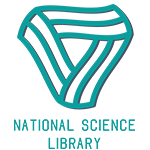Please use this identifier to cite or link to this item:
https://openscience.ge/handle/1/1402| DC Field | Value | Language |
|---|---|---|
| dc.contributor.advisor | აკობია, ეკა | ka |
| dc.contributor.author | ტყეშელაშვილი, მარიამ | ka |
| dc.date.accessioned | 2020-01-16T09:57:12Z | - |
| dc.date.available | 2020-01-16T09:57:12Z | - |
| dc.date.issued | 2018 | - |
| dc.identifier.uri | https://openscience.ge/handle/1/1402 | - |
| dc.description.abstract | Purpose of this paper is to research one of the most controversial and widely debated issue.- Sino-Russian relations on the Eurasian Continent. The dynamics of the relations between those two countries is analyzed by portraying increased patterns of different types of cooperation mechanisms. The aim of the paper is to explain the nature of such mechanisms: economic integration projects, ad hoc diplomatic platforms, cooperation in international organizations, joint military exercises and other means of soft balancing techniques used by China and Russia. Case study presented in the paper aims to research the cooperation between two regional leaders in the framework of the grand economic projects – Belt and Road Initiative. Considering the fact that, this project overlaps with the “back yards” of both Russia and China – Central Asia – where Russia is presented with its own regional integration project and with military bases, skeptical views were raised concerning Sino-Russian cooperation. However, Beijing and Moscow continue to work closely around BRI. In order to explain this phenomenon Robert Pape’s soft balancing theory is proposed along with the hypothesis, that China and Russia cooperate in order to replace the liberal international order dominated by the West and to restrain the influence of the United States. The aim of the paper is to raise awareness about importance of the soft balancing theory in the 21st century international relations in which the great power revelry has adopted a new face. With this respect, the case study presented in the paper is the important addition to the theory and leaves the room to expand it further. | en |
| dc.description.abstract | წინამდებარე ნაშრომი მიზნად ისახავს 21-ე საუკუნის საერთაშორისო ურთიერთობებში ერთ-ერთი ყველაზე წინააღმდეგობრივი და ფართოდ განხილული საკითხის - ჩინეთ-რუსეთის ურთიერთობის კვლევას ევრაზიის კონტინენტზე. ურთიერთობის ეს დინამიკა განხილულია ორ ქვეყანას შორის სხვადასხვა მიმართულებით თანამშრომლობის მზარდი ტენდენციების გაშუქებით. ნაშრომის ამოცანას წარმოადგენს ამ თანამშრომლობის წარმოჩენა ეკონომიკური ინტეგრაციის პროექტებით, ad hoc დიპლომატიური პლატფორმებით, საერთაშორისო ინსტიტუტებში თანამშრომლობთ, საერთო სამხედრო წვრთნებითა და რბილი დაბალანსების სხვა იმ მეთოდებით, რომელსაც რუსეთი და ჩინეთი იყენებს. ქეისად წარმოდგენილია ევრაზიის კონტინენტზე ორი რეგიონული ლიდერის თანამშრომლობა უმსხვილესი ეკონომიკური პროექტის - სარტყლისა და გზის ინიციატივის ფარგლებში. ვინაიდან ეს პროექტი ფარავს ორივე ქვეყნის ,,უკანა ეზოს“ - შუა აზიას - სადაც რუსეთი თავისი ეკონომიკური ინტეგრაციის მექანიზმითა (ევრაზიის ეკონიმიკური გაერთიანება) და სამხედრო ბაზებით არის წარმოდგენილი, ამ თანამშრომლობის პერსპექტივა სკეპტიკურად აღიქმებოდა. ამისდა მიუხედავად, პეკინსა და მოსკოვს შორის პროექტის გარშემო თანამშრომლობა გრძელდება. ამ ფენომენის ასახსნელად ნაშრომში წარმოდგენილია რობერტ პეიპის მიერ შემუშავებული რბილი დაბალანსების თეორია და ჰიპოთეზა იმის შესახებ, რომ ამგვარი კოოპერაციით ორი ქვეყნა ცდილობს შეცვალოს დასავლეთის მიერ დომინირებული ლიბერალური მსოფლიო წესრიგი და შეაკავოს აშშ-ის გავლენა. ნაშრომის ამოცანაა წარმოაჩინოს რბილი დაბალანსების აქტუალობა 21-ე საუკუნის საერთაშორისო ურთიერთობებში, სადაც დიდ ძალთა დაპირისპირებამ ახალი ბუნება შეიძინა. ნაშრომში წარმოდგენილი ქეისი ამ თეორიის მნიშვნელოვანი დანამატია და მისი კიდევ უფრო განვრცობის საშუალებას იძლევა. | ka |
| dc.language.iso | ka | en |
| dc.publisher | Ivane Javakhishvili Tbilisi State University | en |
| dc.publisher | ივანე ჯავახიშვილის სახელობის თბილისის სახელმწიფო უნივერსიტეტი | ka |
| dc.subject | თანამედროვე ჩინეთის საგარეო პოლიტიკის ბუნება | ka |
| dc.subject | ჩინეთ-რუსეთის თანამშრომლობის ბუნება | ka |
| dc.subject | რბილი დაბალანსების თეორია | ka |
| dc.title | ჩინეთ-რუსეთის ურთიერთობა ევრაზიის კონტინენტზე: კონკურენცია თუ თანამშრომლობის ახალი ერა? | ka |
| dc.type | master thesis | en |
| dc.type | სამაგისტრო ნაშრომი | ka |
| thesis.degree.name | MA in Diplomacy and International Politics | en |
| thesis.degree.name | დიპლომატიისა და საერთაშორისო პოლიტიკის მაგისტრი | ka |
| thesis.degree.level | 1 | - |
| thesis.degree.discipline | დიპლომატია და საერთაშორისო პოლიტიკა. Diplomacy and International Politics | ka |
| dc.contributor.institution | Ivane Javakhishvili Tbilisi State University | en |
| dc.contributor.institution | ივანე ჯავახიშვილის სახელობის თბილისის სახელმწიფო უნივერსიტეტი | ka |
| dc.contributor.faculty | Faculty of Social and Political Sciences | en |
| dc.contributor.faculty | სოციალურ და პოლიტიკურ მეცნიერებათა ფაკულტეტი | ka |
| item.languageiso639-1 | ka | - |
| item.cerifentitytype | Publications | - |
| item.cerifentitytype | Publications | - |
| item.openairetype | master thesis | - |
| item.openairetype | სამაგისტრო ნაშრომი | - |
| item.openairecristype | http://purl.org/coar/resource_type/c_bdcc | - |
| item.openairecristype | http://purl.org/coar/resource_type/c_18cf | - |
| item.fulltext | With Fulltext | - |
| item.grantfulltext | open | - |
| Appears in Collections: | სოციალურ და პოლიტიკურ მეცნიერებათა ფაკულტეტი (დისერტაციები, სამაგისტრო ნაშრომები) | |
Files in This Item:
| File | Description | Size | Format | |
|---|---|---|---|---|
| MA Thesis.Tkeshelashvili -diplomatia 2019.pdf | ჩინეთ-რუსეთის ურთიერთობა ევრაზიის კონტინენტზე: კონკურენცია თუ თანამშრომლობის ახალი ერა? | 1.04 MB | Adobe PDF | View/Open |
CORE Recommender
Page view(s)
127
checked on May 17, 2024
Download(s)
392
checked on May 17, 2024
Google ScholarTM
Check
Items in DSpace are protected by copyright, with all rights reserved, unless otherwise indicated.

